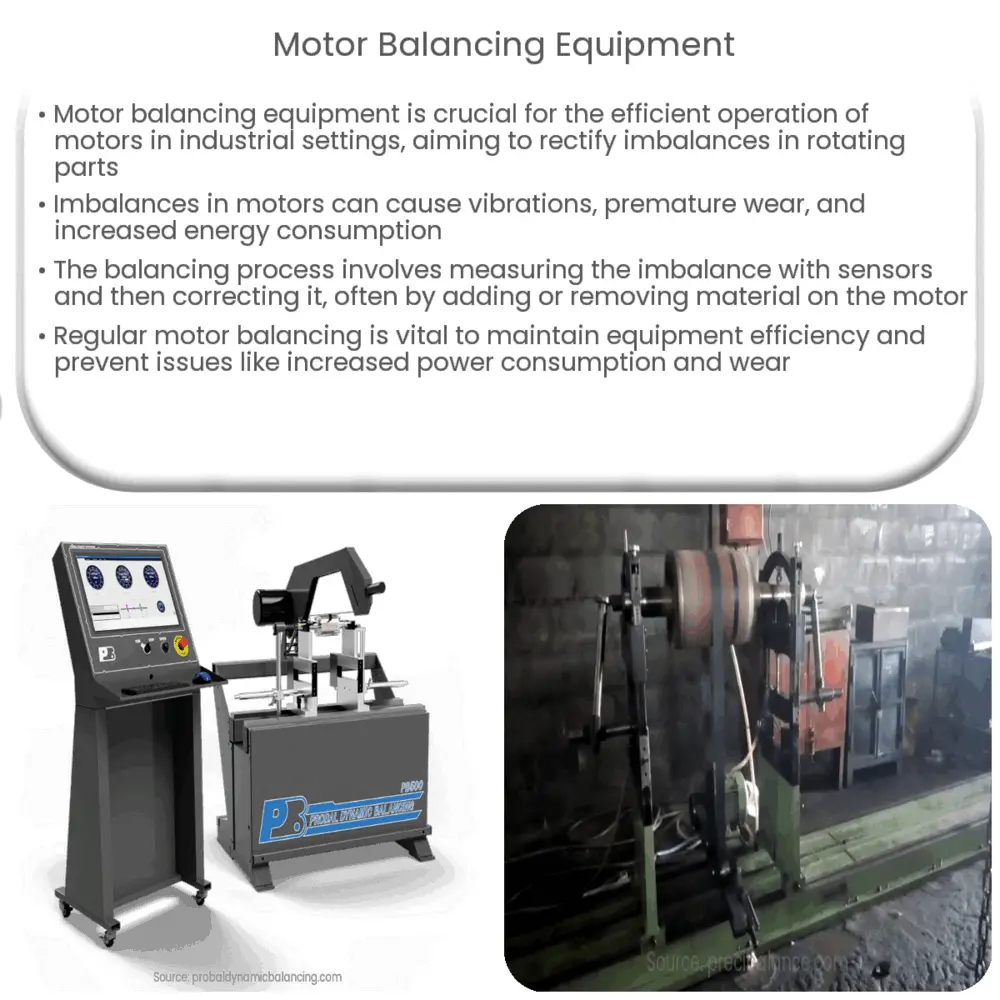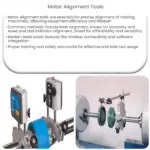Explore the importance of motor balancing equipment, its role in detecting and correcting imbalances, types of balancing, and recent advancements.

Understanding Motor Balancing Equipment
The importance of motor balancing equipment in industrial applications cannot be overstated. In essence, these are tools designed to measure and correct the imbalances in rotating machine parts, most commonly motors. Their primary function is to ensure the smooth and efficient operation of motors, thereby increasing their lifespan and productivity while reducing wear and tear.
Imbalance: A Common Motor Issue
Imbalance is one of the most common issues that can negatively affect the performance of a motor. It occurs when the center of mass doesn’t align with the center of rotation. This misalignment can cause vibrations during operation, leading to premature wear, mechanical stress, increased energy consumption, and even potential failure of the motor.
The Role of Motor Balancing Equipment
Motor balancing equipment is designed to detect and correct these imbalances. The process involves two main steps: measuring the imbalance and then correcting it. The measuring is usually done by a sensor that can detect the amount and location of the imbalance. This data is then used to guide the correction process, typically involving the removal or addition of material at specific points on the motor.
- Measuring Imbalance: Motor balancing equipment uses sensors to measure the level of imbalance. These sensors can be acceleration, velocity, or displacement sensors. They detect the vibrations caused by the imbalance and translate them into electrical signals. These signals are then processed and analyzed to determine the amount and position of the imbalance.
- Correcting Imbalance: Once the imbalance has been measured, the motor balancing equipment corrects it. This is typically done by adding or removing material from the motor. For example, if the motor is heavier on one side, material may be removed from that side to balance it out. Conversely, if the motor is lighter on one side, material may be added to that side to balance it.
The Types of Motor Balancing
Motor balancing can be categorized into two types: static and dynamic. Static balancing focuses on balancing the motor in a stationary state, while dynamic balancing involves balancing the motor while it’s in motion.
- Static Balancing: This is the simpler form of motor balancing, and it’s done when the motor is not in operation. The motor is placed on a balancing machine, and the imbalance is measured. The balancing is achieved by adding or removing material until the center of mass aligns with the center of rotation.
- Dynamic Balancing: This form of motor balancing is more complex and involves the motor being balanced while in operation. The balancing machine measures the imbalance in two planes (at 90 degrees to each other) and corrects them simultaneously. Dynamic balancing is more accurate and is typically used for high-speed motors.
Choosing the Right Balancing Equipment
Choosing the right motor balancing equipment is a crucial decision that can have significant implications for the efficiency and longevity of your motors. Various factors should be taken into consideration while making this decision.
- Type of Motor: Different types of motors might require different kinds of balancing equipment. For instance, a high-speed motor might require dynamic balancing equipment, while a slower motor might be adequately served by static balancing equipment.
- Accuracy: The precision of the balancing equipment is a vital factor. More accurate equipment can detect smaller imbalances, leading to smoother operation and less wear on the motor.
- Ease of Use: Balancing equipment should be user-friendly. Equipment that is difficult to use can lead to mistakes during the balancing process, which can be costly and time-consuming to correct.
Importance of Regular Balancing
Regular balancing of motors is crucial in maintaining the efficiency of your equipment. Unbalanced motors can lead to a host of issues such as increased power consumption, premature wear of parts, and even catastrophic failure. Thus, incorporating regular balancing checks into your maintenance schedule is highly recommended.
Latest Advances in Motor Balancing Technology
The field of motor balancing has seen significant advancements in recent years. Modern balancing machines come equipped with digital measuring systems and are often capable of automatic correction. Some even offer built-in analytics to help users identify recurring issues and make predictive maintenance easier. These advancements have made motor balancing more accurate, efficient, and convenient than ever before.
Conclusion
In conclusion, motor balancing equipment plays an integral role in the efficient operation and longevity of motors. By detecting and correcting imbalances, these tools prevent unnecessary wear and tear, reduce energy consumption, and minimize the risk of motor failure. The right balancing equipment, combined with a routine maintenance schedule, can significantly enhance the performance of your motors and provide substantial cost savings in the long run. Given the rapid advancements in balancing technology, it is an exciting time to be involved in the industry. Embracing these developments will undoubtedly lead to even greater efficiency and reliability of motors in the future.




